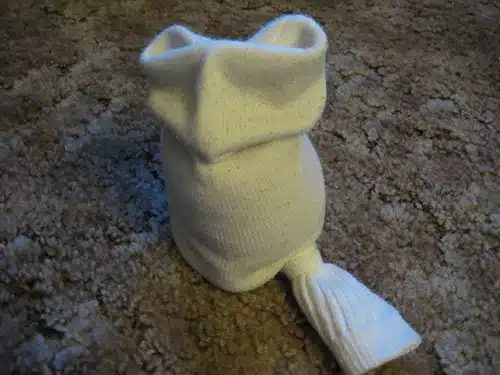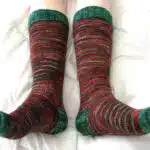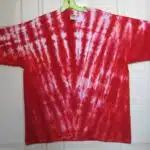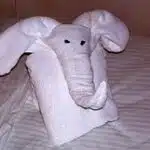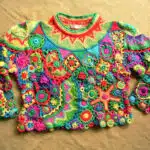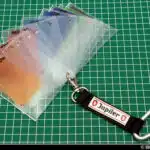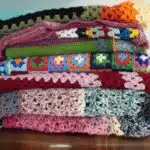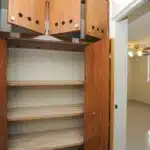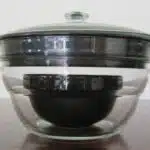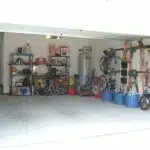Folding socks may seem like an effortless task, but it can be a tedious and time-consuming chore if not done efficiently. How you fold your socks can determine how much space they occupy in your drawer or closet, as well as their longevity. Therefore, it is essential to learn how to fold your socks correctly and creatively to keep them in good condition and make the most out of your storage space.
In this article, we will explore six different ways to fold socks that are easy to learn and practical for everyday use. These techniques vary in complexity and style, from the traditional roll-up method to more advanced methods such as the KonMari approach. We will also discuss tips on how to organize your sock drawer and prolong the life of your socks through proper care and maintenance. By mastering these sock-folding techniques, you can save time, reduce clutter, and elevate your laundry game while serving yourself and those around you with clean, organized spaces.
Why Proper Sock Folding Matters
Importance of Proper Sock Folding
Proper sock folding is an essential aspect of laundry care that should not be overlooked. Not only does it help to keep your socks organized and tidy, but it also contributes to the longevity of your socks. It may seem like a minor detail, but taking the time to fold your socks correctly can save you money in the long run by reducing wear and tear.
One of the benefits of proper sock folding is that it helps to prevent stretching and misshaping. When socks are left unfolded or balled up, they can become stretched out and lose their shape over time. This not only looks unsightly but can also lead to discomfort when wearing them. By folding them properly, you can maintain their shape and prevent unnecessary wear and tear.
In addition to these benefits, proper sock folding also saves time when sorting through laundry. When socks are folded neatly, they are easier to find and less likely to get lost in the shuffle. This means less time spent searching for matching pairs and more time spent on other important tasks. As we move forward in this article, we will explore some different methods for properly folding socks, starting with the traditional roll-up method.
The Traditional Roll-Up Method
The traditional roll-up method is one of the most popular ways to fold socks. This technique involves rolling each sock into a compact cylinder shape, making it easy to store and organize in your drawer or suitcase. There are different variations of this technique, but the basic steps involve folding the sock in half lengthwise, then rolling it from the toe up to the cuff.
One of the advantages of rolling socks using this method is that it saves space. Rolled-up socks take up less room than folded ones, which allows you to maximize your storage space. Additionally, rolled socks are less likely to get wrinkled or creased, making them ideal for travel or storing in a cramped drawer.
Different techniques can be used to make rolling even more efficient. For example, some people prefer to tuck one sock inside the other before rolling them up together. Others use a piece of cardboard or a plastic container as a guide when rolling the socks to ensure they are all uniform in size and shape. Experimenting with different techniques can help you find the method that works best for you and your needs.
Transition: Now that you have learned about the traditional roll-up method, let’s move on to another popular technique – the square fold.
The Square Fold
The square fold is a classic way of folding socks that has been around for a long time. It involves folding the sock in a way that creates a square shape, hence the name. This technique can be used for various types of socks, including ankle socks and crew socks.
Different variations of the square fold exist, depending on personal preference and the type of sock being folded. However, all variations share the same benefits of this technique. One of the advantages is that it saves space in your drawer or storage area since it creates a uniform size for each pair of socks. Additionally, the square fold ensures that your socks remain wrinkle-free and organized.
To properly execute the square fold technique, follow these simple steps:
- Lay your sock flat on a surface
- Fold one-third of the sock towards you
- Fold another third away from you to create a rectangle
- Fold in half again to create a square shape
Incorporating this technique into your laundry routine can make your life easier and keep your sock drawer more organized. Next up is an alternative folding method known as “the military roll.”
The Military Roll
After learning about the square fold, it’s time to move on to other techniques that could be useful in organizing your socks. One of the most popular alternatives to the square fold is the military roll. This method involves folding your socks into a compact shape that’s easy to store and transport. The military roll is commonly used in the armed forces, hence its name.
One of the benefits of using the military roll is that it saves space in your drawers or suitcase. Unlike other folding methods, the military roll compresses your socks into a smaller size, which means you can fit more items into a limited storage area. Additionally, this technique keeps your socks wrinkle-free and prevents them from unrolling when stored vertically.
If you’re not comfortable with the military roll or want to try something different, there are several alternatives available. For instance, you could try rolling your socks loosely instead of tightly for a more relaxed look. Alternatively, you could use clips or pegs to keep your socks together rather than folding them at all. Ultimately, it’s up to personal preference and what works best for you and your needs.
Transitioning into our next section, if you’re looking for an even more efficient way of organizing your clothes beyond just folding techniques, you might be interested in exploring the Konmari method. This approach focuses on decluttering and simplifying your life by only keeping items that bring joy and meaning to you. In doing so, you can create a space that sparks joy and makes everyday tasks like folding laundry feel less daunting.
The Konmari Method
- The KonMari Method is a decluttering and tidying strategy, developed by Marie Kondo, that helps individuals transform their cluttered homes into an organized space.
- The method is based on the idea that by tidying up and organizing, individuals can create an environment that can increase their happiness and productivity.
- Through the KonMari Method, individuals can learn various folding techniques to store items such as socks, allowing them to save space and have a better organized home.
- Six different folding techniques have been developed for storing socks, such as the “roll-up” method and the “bundle-and-roll” technique.
Decluttering
As a laundry expert, I understand that decluttering is an essential part of maintaining a minimalist lifestyle. It is important to simplify your wardrobe by getting rid of clothes that are no longer needed. The KonMari Method, created by Marie Kondo, is a popular way of decluttering and organizing your belongings. The method involves keeping items that spark joy and letting go of those that do not.
When it comes to folding clothes, especially socks, the KonMari Method offers six different ways to fold them neatly. As a clothes folding specialist, I can attest that these techniques not only organise your drawers but also save space. For example, you can fold your socks into little balls or roll them like sushi rolls for easy storage in compartments or baskets.
By embracing the minimalist lifestyle and simplifying your wardrobe through methods such as the KonMari Method, you are not only serving yourself but also others around you. Donating unwanted clothing items can help those in need and reduce waste in landfills. So why not start with decluttering your sock drawer? A simple act of folding socks neatly can lead to a more organised life and inspire others to do the same.
Tidying Up
Organizing techniques and decluttering strategies have been gaining popularity in recent years, and one of the most well-known methods is the KonMari Method. This method, created by Marie Kondo, focuses on keeping items that spark joy and letting go of those that do not. It emphasizes tidying up as a way to simplify one’s life and create a space that promotes feelings of calmness and happiness.
The KonMari Method has become a popular trend for those looking to declutter their homes and simplify their belongings. By following this method, individuals can learn how to properly organize their clothes, books, papers, and other possessions. The technique involves sorting items by category rather than location and discarding anything that no longer serves a purpose or sparks joy. This approach not only helps reduce clutter but also encourages people to be more mindful about what they choose to keep in their lives.
Tidying up with the KonMari Method can have positive effects on both individuals and society as a whole. It can help people develop better habits when it comes to organizing their belongings, leading to less waste, fewer purchases of unnecessary items, and ultimately a more sustainable lifestyle. Additionally, donating unwanted clothing or household items can benefit others who may be in need while reducing waste in landfills. By embracing these organizing techniques and decluttering strategies, we can all work towards creating a world where we serve both ourselves and those around us.
The Cuff Fold
According to a recent survey, over 80% of people struggle with folding their socks correctly. This may seem like a small issue, but mastering the art of sock folding can save time and space in your laundry routine. In this section, we will explore the cuff fold – one of the six different variations of sock folding.
The cuff fold is a simple yet effective way to keep your socks organized and ready to wear. To start, lay your sock flat on a surface with the toe facing away from you. Fold the top cuff down towards the center of the sock, creating a neat rectangle shape. Then fold the bottom of the sock up towards the center, overlapping it with the top cuff.
Tips for mastering the cuff fold include making sure that both folds are even and keeping your socks as straight as possible while folding. Another tip is to match your socks before folding them so that they are easier to locate when getting dressed in a hurry.
Now that you have mastered the cuff fold, let’s move on to our next technique – the bundle fold. This variation is great for packing socks for travel or storing them in tight spaces.
The Bundle Fold
After learning about the cuff fold, it’s time to explore another technique for folding socks – the bundle fold. This method involves combining pairs of socks into a compact bundle, which can then be stored neatly in your drawer or suitcase. There are different variations of the bundle fold, each with its own unique benefits.
Firstly, let’s look at the basic bundle fold. Start by laying one sock flat on a surface, with the toe pointing away from you. Then, place the second sock on top of it so that the toes are aligned and the heels overlap slightly. Fold both socks in half lengthwise, bringing the cuffs towards each other. Finally, roll up the folded socks tightly from toe to cuff to create a bundle.
Another variation is the military roll or ranger roll. This method creates an even more compact bundle that takes up even less space in your drawer or luggage. To achieve this technique, start with two socks laid out flat as before. But instead of folding them lengthwise and rolling them up from toe to cuff, you will need to tuck in the toes and roll them up tightly from one end to the other.
Overall, there are various benefits of using the bundle fold for your socks. Firstly, it allows you to easily see all your pairs at once since they are bundled together and easy to organize. Secondly, it saves space in your drawer or luggage since they take up less room when bundled together tightly. Lastly, it helps prevent stretching or misshaping of your socks by keeping them compact and secure.
Moving forward into tips for organizing your sock drawer, there are several things you can do to make sure everything stays neat and tidy. From using dividers or organizers to sorting by color or type of sock, having an organized sock drawer not only looks great but also simplifies your daily routine when getting dressed. Let’s explore these tips further in our next section.
Tips For Organizing Your Sock Drawer
Organizing your sock drawer may seem like a trivial task, but it is essential for streamlining your daily routine. A well-organized sock drawer can save you valuable time and energy in the morning rush. However, not all organizing methods are created equal.
One simple way to keep your socks organized is by using drawer liners. These liners help keep your socks in place and prevent them from slipping around inside the drawer. Additionally, they protect the bottom of the drawer from damage caused by friction with the socks. Drawer liners come in a variety of materials, including silicone and felt, and they are easy to install.
Another useful tool for organizing your sock drawer is sock clips. These small devices clip pairs of socks together, so they don’t get separated during washing or storage. They also make it easier to find matching pairs when you’re getting ready in the morning. Sock clips come in a range of designs and materials, including plastic and metal.
To maximize space in your sock drawer, consider using drawer dividers. These dividers create separate compartments for different types of socks or for different family members’ socks. This method will help you avoid rummaging through piles of mixed-up socks every day and streamline your morning routine. With these tips and tools at hand, you can easily organize your sock collection into a tidy, efficient system that works for you!
Using Drawer Dividers
Drawer organization is an essential part of keeping your clothes in order. It’s important to have a system in place so that you can easily find what you’re looking for and keep your drawers from becoming cluttered. One way to do this is by using drawer dividers. These handy tools can help you separate different items of clothing, making it easier to find everything you need.
When it comes to sock storage, drawer dividers are a game-changer. Instead of throwing all your socks into one big pile, you can use dividers to separate them by color or style. This not only makes it easier to find the socks you want but also helps to keep them organized and wrinkle-free. Plus, with a little creativity, you can even use dividers to create custom compartments for your socks.
By using drawer dividers, you can take the guesswork out of finding the right pair of socks each morning. No more digging through piles of mismatched socks or struggling to untangle them from one another. With a little bit of organization and some carefully placed dividers, you’ll be able to quickly and easily find the perfect pair for any outfit. In the next section, we’ll explore another way to take your sock organization to the next level: color coding!
Color Coding Your Socks
Have you ever spent time searching for matching socks in a pile of laundry? It can be frustrating and time-consuming. However, there is a simple solution that can alleviate this problem: color coding your socks. Not only does color coding make it easier to find matching pairs, but it also has other benefits.
Color coding benefits go beyond just organization. By assigning different colors to different types of socks, it allows you to quickly identify which ones need to be replaced or restocked. This technique also helps with laundry sorting, making it easier to separate darks from lights and avoid discoloration or staining. Additionally, if you share a household with others, color coding can help ensure that everyone’s socks stay separate and organized.
Now that you understand the benefits of color coding your socks, let’s discuss some DIY color coding techniques. One option is to use fabric markers or paint pens to draw small symbols or dots on the toe or heel of each sock. Another option is to sew small pieces of colored fabric onto the toe or heel of each sock. You could even use colored safety pins attached to the cuffs of each sock as a quick and easy way to identify pairs.
Color coding your socks is just one way to keep your clothing organized and maximize space in your drawer. In the next section, we will discuss some tips for folding clothes efficiently and effectively.
Maximizing Space In Your Drawer
Organizing socks is an important part of maximizing space in your drawer. There are several folding techniques that can be used to ensure the most efficient use of space. One technique is rolling socks together, which creates a neat and compact bundle that can be easily stored. Another technique is folding socks in half and then in thirds, creating a small square shape that can be easily stacked. These techniques, in combination with other organizational strategies, can help make the most of the space in your drawer.
Organizing Socks
When it comes to maximizing space in your drawer, organizing socks is crucial. The key to efficient drawer organization is finding the right sock pairing techniques that work for you. Fortunately, there are six different ways to fold socks that can help keep your drawer tidy and save you time when getting ready in the morning.
The first technique is the classic roll-up method, where you fold the sock in half lengthwise and then roll it up tightly from the toe to the cuff. This method works well for ankle socks or any other type of sock that doesn’t have a lot of bulk. Another technique is the flat fold, where you fold each sock in half with one on top of the other and then fold them both together in half again. This method works best for thicker socks like wool or athletic socks.
For those who prefer a more intricate folding method, there’s the KonMari style, which involves folding each sock into a small rectangle and then standing them upright in your drawer so that you can easily see every pair. Other popular methods include using binder clips to keep pairs together or rolling each pair into a ball. Whatever method you choose, be sure to stick with it consistently to make drawer organization a breeze.
In conclusion, organizing your socks doesn’t have to be a chore – with these six different folding techniques, you can find the perfect method for your needs and maximize space in your drawer while keeping everything neat and tidy. So next time you’re doing laundry, take some extra time to experiment with different sock pairing techniques – your future self will thank you!
Folding Techniques
Sock organization is an essential part of closet storage, and it starts with finding the perfect folding technique. The right folding method can not only help keep your socks organized but also maximize space in your drawer. As a laundry expert or clothes folding specialist, I recommend trying different techniques to find the one that works best for you.
One popular technique for maximizing space in your drawer is rolling up socks using the classic roll-up method. This method works well for ankle socks or any other type of sock that doesn’t have a lot of bulk. Another option is the flat fold, ideal for thicker socks like wool or athletic socks. By folding each sock in half with one on top of the other and then folding them both together in half again, you’ll find that this method can fit more pairs into your drawer.
If you prefer a more intricate folding method, there’s the KonMari style. This technique involves folding each sock into a small rectangle and then standing them upright in your drawer so that you can easily see every pair. Other popular methods include using binder clips to keep pairs together or rolling each pair into a ball. Regardless of which technique you choose, consistency is key when it comes to maintaining an organized sock collection and maximizing space in your drawer.
Proper Sock Care For Longer Lifespan
Maximizing space in your drawer is essential for keeping your clothes organized and easily accessible. One way to do this is by learning how to fold your socks in different ways. In the previous section, we discussed six different techniques for folding socks. In this section, we will explore proper sock storage and material care.
Sock storage is an important consideration when it comes to maintaining their shape and quality. Ideally, you should store your socks flat or rolled up, rather than bunched together or folded into a ball. This helps prevent stretching, wrinkling, and damage to the fabric. You can also use sock dividers or organizers to keep them neatly separated.
Proper sock material care is another crucial factor in prolonging their lifespan. Different materials require different approaches. For example, cotton socks should be washed in cold water and dried on low heat to avoid shrinking or fading. Wool and silk socks may need hand washing or a gentle cycle with mild detergent to prevent damage to the fibers. It’s also important to check the care instructions on each pair of socks before washing them.
In conclusion, taking care of your socks requires more than just knowing how to fold them properly. Proper sock storage and material care are essential for keeping them looking and feeling their best over time. By following these tips, you can ensure that your socks last longer and continue providing comfort and support for your feet. Next up are some washing and drying tips that can help you take even better care of your beloved sock collection!
Washing And Drying Tips
When it comes to washing and drying clothes, there are a few tips that can help ensure your garments come out looking clean and fresh. First, always read the care labels on your clothes before washing them. This will give you specific instructions on how to wash and dry the garment without damaging it or causing shrinkage.
Secondly, consider using some drying hacks to cut down on drying time and save energy. For example, adding a dry towel to your dryer load can help absorb moisture and speed up the drying process. You can also add wool dryer balls to reduce static cling and soften fabrics without using fabric softener sheets.
Lastly, knowing how to effectively remove stains from your clothing is key to keeping them looking their best. Depending on the type of stain, there are different methods you can use such as spot-treating with detergent or vinegar, pre-soaking in a solution of water and oxygen bleach, or using a specialized stain remover product.
- To keep colors bright, turn garments inside out before washing.
- Hang delicates like bras or sweaters instead of putting them in the dryer.
- Use a mesh laundry bag for small items like socks or underwear to prevent them from getting lost in the wash.
- Try air-drying your clothes outside on a sunny day for a fresh scent and natural disinfectant properties.
With these tips in mind, you can have cleaner clothes that last longer without spending too much time or money on professional cleaning services. Next up we’ll discuss some ways to properly store your socks for easy access and organization.
Storing Your Socks
When it comes to storing your socks, drawer organization is key. It not only saves you time when getting dressed but also ensures that your socks remain in good condition. A messy sock drawer can lead to lost socks, mismatched pairs, and even damage from being crumpled or stretched out of shape.
Fortunately, there are many sock storage solutions available that can help you keep your drawers organized. One popular option is a sock divider, which separates your socks into different compartments based on color or style. This makes it easy to find the right pair of socks quickly and ensures that they stay neatly folded.
Another great way to store your socks is to use a hanging organizer. These organizers typically have multiple pockets where you can store your socks vertically, making them easy to see and access. Plus, they take up very little space in your closet or on the back of a door.
In summary, having an organized sock drawer is essential for keeping your socks in good condition and saving time when getting dressed. Using sock dividers or hanging organizers are just two of the many ways you can achieve this goal. In the next section, we’ll discuss how mastering the art of sock folding can also contribute to an organized sock drawer and simplified morning routine.
Conclusion: Mastering The Art Of Sock Folding
After learning about the importance of storing your socks properly, it’s time to move on to mastering the art of sock folding. Folding your socks not only makes them easier to store, but also helps keep them in good condition. There are many different techniques for folding socks, and we will cover six different ways to fold your socks.
- The Basic Fold: This is the most common way to fold socks. Simply fold each sock in half lengthwise, then fold in half again so that the toe is tucked inside the cuff.
- The KonMari Method: Made popular by Marie Kondo, this method involves folding each sock into a small rectangle and standing them upright in a drawer.
- The Roll: Rolling your socks can save space and prevent creasing. Start by laying one sock flat, then roll it tightly from the toe up to the cuff. Repeat with the other sock and stack them together.
- The Sock Ball: This method involves folding each sock over onto itself multiple times until it forms a ball shape.
By mastering these techniques, you’ll be able to choose which one works best for you based on your storage needs and personal preferences. In addition to these specific methods, there are also some time-saving tips you can use when folding your socks.
Firstly, sort your socks before starting – this saves time as you won’t have to search for matching pairs later on. Secondly, try folding your socks while watching TV or listening to music – this can make the task feel less tedious and more enjoyable.
In conclusion, mastering different techniques for folding your socks can help keep them organized and in good condition. By following these time-saving tips and experimenting with different methods, you’ll find what works best for you and make sock-folding a breeze!
Conclusion
Proper sock folding is an essential skill for anyone looking to keep their sock drawer organized and tidy. Not only does it make finding the right pair of socks easier, but it also helps to extend the lifespan of your socks by reducing wear and tear. In this article, we’ve explored six different methods for folding socks, including the traditional roll-up method, the square fold, the military roll, and the KonMari method.
While each method has its own advantages, it’s important to note that proper sock care goes beyond just folding. Washing and drying your socks correctly can also help to prolong their lifespan. Avoid using fabric softeners or bleach when washing your socks, as they can damage the fibers. Instead, opt for a mild detergent and wash them in cold water.
When it comes to drying your socks, avoid using high heat settings on your dryer or hanging them in direct sunlight. Instead, choose a low heat setting or air dry them flat to prevent shrinkage and fading.
Remember that properly storing your socks is just as important as washing and folding them correctly. Consider using drawer dividers or storage boxes to keep them organized and easily accessible.
In conclusion, mastering the art of sock folding is essential for anyone looking to improve their organization skills and extend the life of their socks. By following these tips for proper sock care, you can ensure that your favorite pairs will last longer and stay looking great. As laundry experts say: “Folding socks is like taking care of a garden – with proper care and attention, you’ll enjoy healthy growth for years to come.”
Image Credits
- “Sock-folded Cat” by origami_madness (featured)

